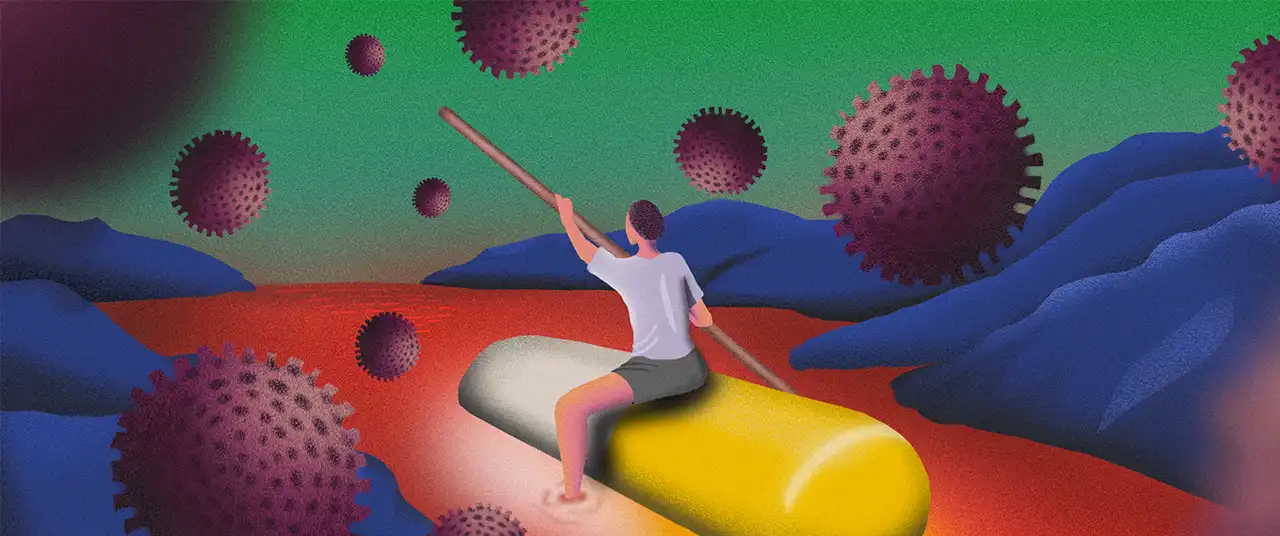Studies show lifelong effects of bacterial exposure during delivery






Antibiotic resistance genes (ARGs) are causing a major headache in the healthcare world, helping bacteria become immune to the drugs we use to fight them.
There are two primary ways bacteria become resistant:
Mutation: Bacteria can develop small changes in their DNA, called mutations, which allow them to survive when exposed to antibiotics. These changes can be due to small alterations in their genetic material, like substitutions or deletions.
Horizontal Gene Transfer (HGT): Bacteria can exchange genetic material with other organisms through three main processes: transformation, transduction, and conjugation.
ARGs are particularly problematic for physicians treating infectious diseases because they make bacteria harder, sometimes impossible, to eliminate. In medical terms, ARGs can be housed in plasmids, transposons, and integrons, which act as vehicles for spreading resistance. Tragically, this rise in antimicrobial resistance (AMR) hits children the hardest, especially those under five.
In India, one in five children under five succumb to drug-resistant infections, with nearly 190,000 of these cases linked to sepsis, a severe bloodstream infection.
The maternal-infant resistome
Pregnant women and infants are among the most vulnerable groups affected by ARGs. The maternal-infant resistome is the collection of antibiotic resistance genes shared between mother and child. While resistance genes naturally occur within bacterial populations, the misuse and overuse of antibiotics–both in medical and agricultural contexts–have accelerated their spread.

Did You Know?
Newborns are at heightened risk because their immune systems are still developing, making them more susceptible to infections and resistant bacteria, with potential lifelong health impacts.
“Infants typically acquire (bacteria with) resistance genes as they pass through the birth canal,” said Dr Ramya S R, a professor and microbiologist. "At birth, the infant’s gut microbiome is not yet well-established, and its development depends on various factors, including the type of delivery, feeding methods, and other influences."
The likelihood of the infant inheriting resistant genes increases if the mother possesses them. “If a mother already carries antibiotic-resistant genes, there's currently no vaccine or direct preventive measure for controlling it,” said Dr Olivia Marie Jacob, a gynaecologist at AIIMS Andhra Pradesh.
In India, the challenge lies in over-the-counter access to antibiotics, allowing people to purchase and consume them without prescriptions. Antibiotics come with specific courses–some for three days, others for five or seven. Once an antibiotic course begins it must be completed, stopping midway after just one or two doses creates selective pressure allowing resistant genes to develop in the gut. Overuse of antibiotics also builds this antibiotic pressure.
In contrast, in Western countries, a baby may receive antibiotics once or twice in their first year. In India however, a child might be exposed to antibiotics up to 12 times by the age of two.

“The constant antibiotic exposure creates selective pressure, leading to mutations in the gut microbiota of the child. The most effective prevention strategy is to avoid unnecessary antibiotic use. Most upper respiratory infections in kids such as sore throats, colds and coughs are viral infections with only occasional bacterial involvement. However, we often don’t wait for confirmation and start taking antibiotics, which only adds to the resistance problem,” she added.
Escalating resistance
In recent years, antimicrobial resistance has become a critical public health issue, with links to the poultry and livestock industries. Current projections warn of 10 million AMR-related deaths annually by 2050.

Routine antibiotic use in healthy animals has led to a dangerous buildup of resistance genes in their gut bacteria. When these resistant genes enter the food chain, they pose a potential threat to human health. In India, stronger policies to regulate over-the-counter antibiotic sales for animal husbandry could be key in slowing the spread of AMR.
Detecting AMR
To identify the presence and prevalence of antimicrobial-resistant genes, researchers rely on two primary sampling methods: clinical and environmental.
“Clinical sampling involves collecting stool samples from individuals in the general population, which are then cultured to identify bacteria types and the resistant genes they carry.” Among the commonly detected gut bacteria are Escherichia coli, Klebsiella pneumoniae, Pseudomonas, and Proteus, which can reveal the extent of antibiotic resistance, said Dr Pooja Rao, a microbiologist and expert with the National Action Plan for AMR at KMC Karnataka.
In contrast, environmental sampling focuses on hospital environments, where swabs from various surfaces are cultured to identify resistant genes. Following sample collection, polymerase chain reaction (PCR) techniques help pinpoint specific resistance genes. Both methods provide essential data on how antimicrobial resistance spreads across communities and healthcare facilities. Hospitals record and report this information to the Indian Council of Medical Research (ICMR), which tracks emerging resistant bacterial strains and related fatalities.
National Action Plan
The government, along with the National Medical Council (NMC), has initiated a National Action Plan to combat antimicrobial resistance. This plan involves comprehensive research to determine resistance levels in various bacteria, analysing the prevalence of resistant genes within both gram-positive and gram-negative bacterial groups. By evaluating the percentage of resistance across bacterial species, the initiative aims to inform more effective antimicrobial and diagnostic stewardship practices. It also has a manual for clinical approach for prescribing antimicrobials which can only be used for treatment.
Diagnostic stewardship emphasises collecting the correct sample at the appropriate time, ensuring accurate and timely diagnosis. Antimicrobial stewardship, meanwhile, focuses on administering the right antibiotic to the right patient at the right time, avoiding unnecessary use across the population.
The government is working with the Indian Council of Medical Research (ICMR) and the NMC to advocate and implement these measures. However, there remains uncertainty regarding the implementation of similar practices within the poultry and animal industries.
A One Health approach, integrating human, animal, and environmental health, is key for combating resistance. Effective stewardship, supported by national initiatives, and stricter regulation in sectors like poultry and animal husbandry, are crucial to safeguarding public health and ecosystems to fight against antimicrobial resistance.
{{quiz}}
Explore other topics
References
- https://pmc.ncbi.nlm.nih.gov/articles/PMC4536854/
- https://www.healthdata.org/sites/default/files/2023-09/India.pdf
- https://vizhub.healthdata.org/microbe/
- https://pmc.ncbi.nlm.nih.gov/articles/PMC6017557/
- https://bmcmicrobiol.biomedcentral.com/articles/10.1186/s12866-022-02447-8
- https://onehealthtrust.org/publications/infographics/burden-antibiotic-resistance-indian-neonates/
- https://www.nmc.org.in/wp-content/uploads/2024/06/AMR%20Module%20for%20Prescribers.pdf











